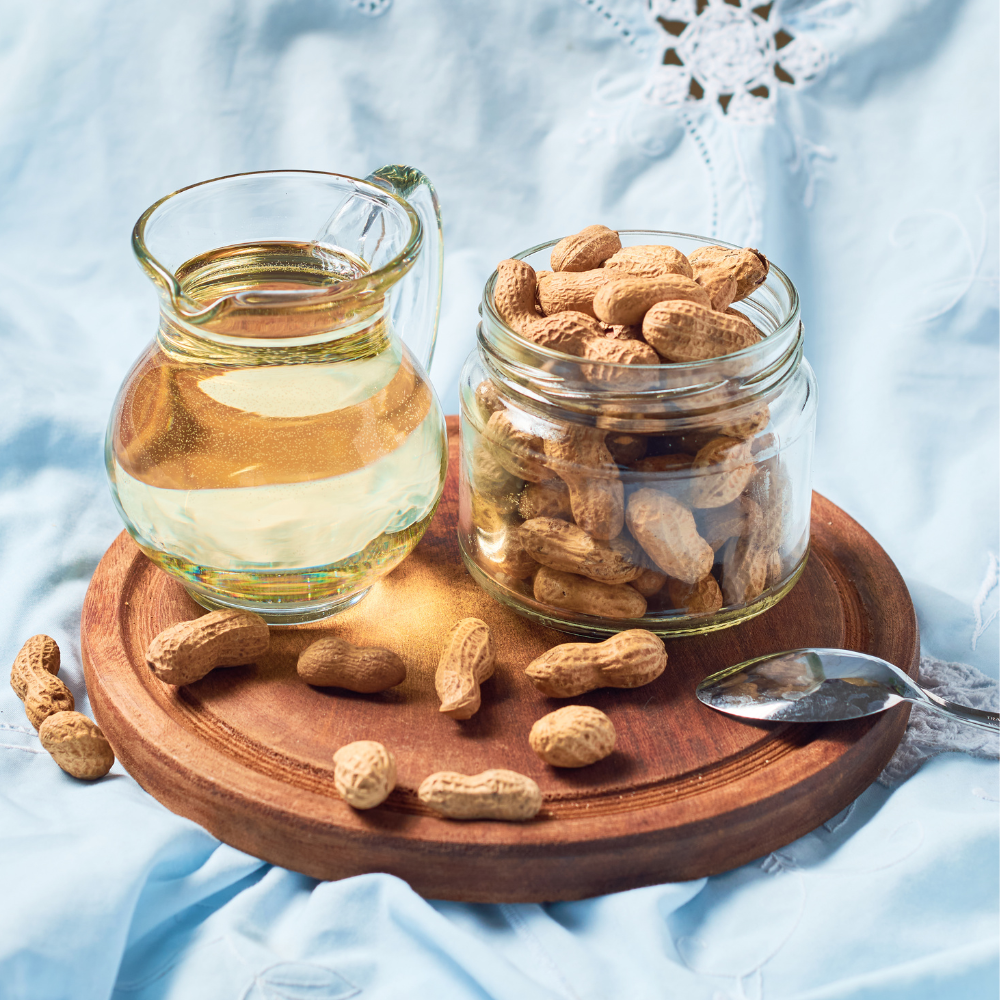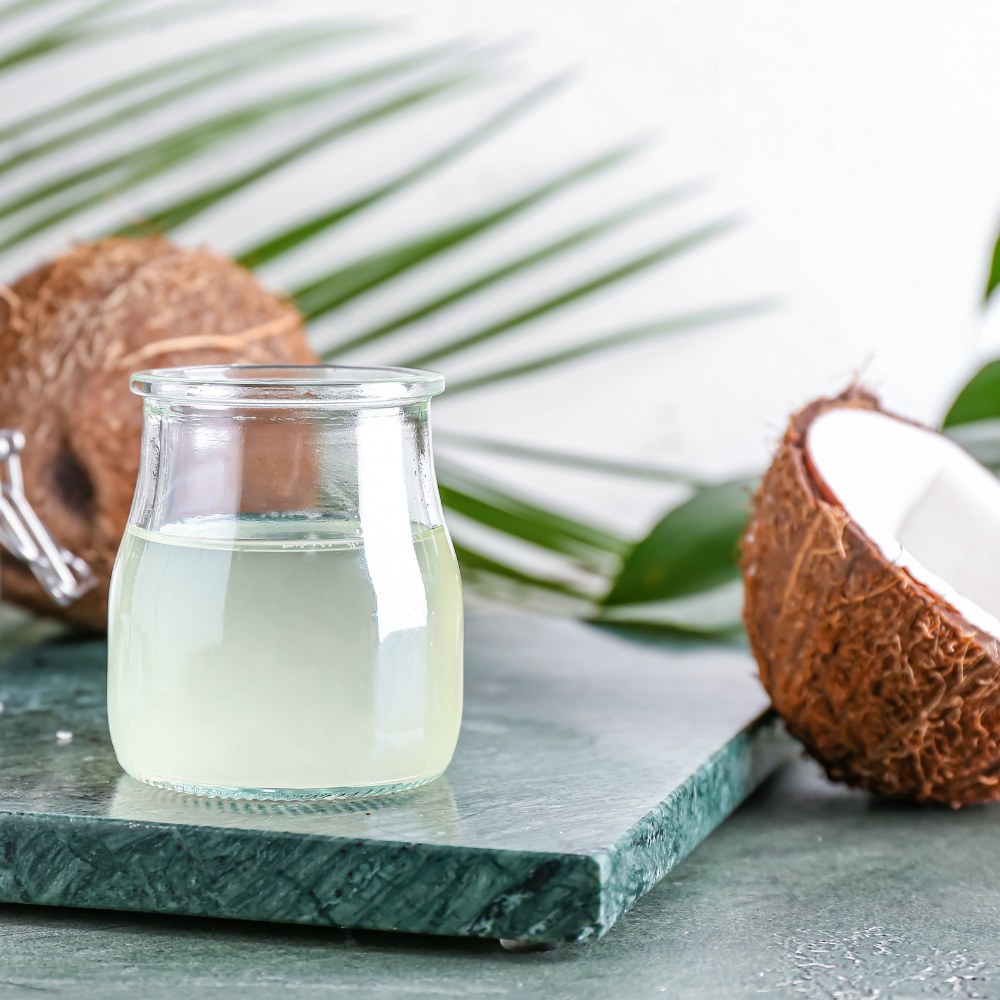Are you set to tantalise your taste buds with the zesty flavours of Indian cuisine, where each mouthful is a delightful dance of spices and aromas?
Picture this: an Indian kitchen where the air is heavy with the unique, nutty aroma of groundnut oil. As we roll into 2023, the world of food continues its creative evolution, but in the heart of every Indian hearth, the love for groundnut oil remains evergreen.
But what makes this oil the culinary equivalent of a timeless classic? What makes it transcend the ebb and flow of food trends?
It's not just the deliciousness it brings to every dish but also the intriguing history it carries and the abundance of health benefits it offers.
From the comforting familiarity of peanut chutney and groundnut curry to the intriguing twists in groundnut masala pasta and groundnut tofu stir-fry, this magic ingredient is the genie that can transform every dish into a wish come true for your taste buds.
In this piece, we're about to whisk you away on an exciting culinary adventure, unveiling a treasure trove of groundnut oil recipes that will make your taste buds sing with joy.
Are you ready to dive into this flavorful journey and explore the enchanting universe of groundnut oil in Indian cooking?
Buckle up, and let's dig in!

|
TABLE OF CONTENTS
|
Groundnut Oil Recipes for 2023
No doubt that cooking with groundnut oil enhances the taste of the food. There are many different groundnut oil recipes you can make using groundnut oil.
But here are a few popular peanut oil recipes that you can try in 2023.
1. Peanut Chutney

Peanut Chutney is one of the most notable groundnut oil recipes. It is a flavorful and vegan chutney, combining peanuts, sesame seeds, chana dal, spices, and herbs.
Perfectly complementing South Indian breakfast staples like Idli, Dosa, Medu Vada, or Uttapam, this quick and delicious chutney adds a wholesome touch to your meal.
Packed with taste and nutrients, it's a must-try for a hearty and healthy dining experience.
How to Make Peanut Chutney
Here is a detailed recipe for making Peanut Chutney:
Ingredients:
- 1 cup roasted peanuts
- 2 tablespoons sesame seeds
- 1 tablespoon chana dal (split Bengal gram)
- 2-3 green chillies (adjust according to your spice preference)
- 1 small onion, roughly chopped
- 2 cloves of garlic
- 1-inch piece of ginger
- Salt to taste
- Water, as needed
- 1 tablespoon groundnut oil
- 1/2 teaspoon mustard seeds (optional, for tempering)
- Curry leaves (optional, for tempering)
Instructions:
- Dry roast sesame seeds and chana dal. Set aside to cool.
- Sauté onion, garlic, ginger, and green chillies until translucent. Let it cool.
- Blend roasted peanuts, sesame seeds, chana dal, sautéed mixture, and salt to a coarse paste.
- Add water gradually for desired consistency.
- Optional: Heat groundnut oil. Add mustard seeds and curry leaves for tempering.
- Pour the tempering over the chutney and mix well.
- Serve with idli, dosa, medu vada, or uttapam.
2. Stir-Fried Vegetables

A simple vegetable stir fry is a versatile and budget-friendly recipe that can be made with fresh or frozen vegetables. This is one of the very unique groundnut oil recipes used in breakfast.
It's a great way to use up leftovers or utilise a bag of frozen stir fry veggies. This quick and easy dish offers endless possibilities for customisation and flavour variations.
With minimal ingredients, it's a convenient and delicious option for a satisfying dinner.
How to Make Stir-Fried Vegetables
The BEST Vegetable Stir Fry Recipe has sautéed vegetables in a sweet-savoury sauce. This one-pan meal goes well with fluffy white rice. These types of groundnut oil recipes are excellent for Asian food cravings when you'd rather cook at home than order takeout.
Ingredients:
- Assorted vegetables (carrots, bell peppers, broccoli, beans, etc.), chopped
- 2 tablespoons groundnut oil
- 2 cloves of garlic, minced
- 1-inch piece of ginger, grated
- Salt and pepper to taste
- Soy sauce (optional)
Instructions:
- Heat groundnut oil in a pan.
- Add minced garlic and grated ginger.
- Stir-fry assorted vegetables until crisp-tender.
- Season with salt and pepper.
- Optionally, add a splash of soy sauce.
- Stir well and cook for a minute.
- Serve hot as a side dish.
- Remember to adjust the cooking time based on the desired texture of the vegetables. Enjoy your stir-fried vegetables!
Other veggies that lend colour and texture to a vegetable stir-fry include snap peas, baby corn, bok choy, zucchini, snow peas, water chestnuts, cabbage, kale, asparagus, and bean sprouts. Try different mixes for a colourful and tasty stir-fry.
3. Peanut Butter Cookies

This recipe closely resembles Betty Crocker's peanut butter cookie recipe, which is based on the iconic Toll House recipe by Ruth Wakefield.
However, instead of using a combination of butter and shortening, like Wakefield's original, we use all butter. This adaptation maintains the essence of the classic peanut butter cookie while adding a delicious twist.
How to Make Peanut Butter Cookies
Interestingly, Peanut butter cookies don't need groundnut oil to cook it. In fact, it extracts its oil itself while cooking.
Ingredients:
- 1 cup groundnut oil
- 1 cup peanut butter
- 1 cup granulated sugar
- 1 cup brown sugar
- 2 eggs
- 2 cups all-purpose flour
- 1 teaspoon baking powder
- 1/2 teaspoon salt
- 1 teaspoon vanilla extract
Instructions:
- Preheat the oven to 180°C (350°F).
- In a bowl, mix together 1 cup groundnut oil, 1 cup peanut butter, 1 cup granulated sugar, and 1 cup brown sugar.
- Add 2 eggs and mix well.
- In a separate bowl, combine 2 cups of all-purpose flour, 1 teaspoon baking powder, and 1/2 teaspoon salt.
- Gradually add the dry ingredients to the wet mixture. Now mix it well until combined.
- Stir in 1 teaspoon vanilla extract.
- Roll the dough into small balls and place them on a baking sheet lined with parchment paper.
- Flatten each ball with a fork to make a crisscross pattern.
- Bake for 10-12 minutes or until golden brown.
- Allow the cookies to cool on the baking sheet for a few minutes.
- Now, transfer them to a wire rack to cool completely.
Health Benefits of Groundnut Oil
Groundnut oil offers numerous health advantages, particularly when utilised for culinary purposes. This versatile cooking oil provides various benefits that promote overall well-being. Let's explore some of the advantages of using groundnut oil for cooking:
- Rich in monounsaturated fats, which cut LDL cholesterol and raise HDL.
- Vitamin E, an antioxidant, protects cells and promotes skin health.
- High in phytosterols, plant chemicals that lower cholesterol and enhance cardiovascular health.
- Good source of resveratrol, a potent antioxidant that may fight cancer and inflammation.
- Contains omega-6 fatty acids. Omega-6 is essential for brain function and may lessen the risk of chronic diseases.
- Due to its satiating impact and metabolic boost, it may help manage weight.
- Contains anti-inflammatory and immune-boosting polyphenols.
- Its high smoke point makes it suitable for high-heat cooking methods.
How to Choose the Best Groundnut Oil for Cooking
Choosing the best cooking groundnut oil involves various criteria. Groundnut oil is popular for cooking due to its high smoke point and neutral flavour.
Guidelines to help you choose:
- Quality: Look for groundnut oil that is extracted through a mechanical or cold-press process rather than chemical extraction. This helps retain the natural flavour, nutrients, and aroma of the oil.
- Purity: Opt for pure groundnut oil without any additives, preservatives, or artificial flavours. Check the label for a single ingredient: groundnut oil.
- Type: Groundnut oil involves refined or unrefined. Deep-frying and high-temperature cooking are better with refined groundnut oil. Sautéing, seasoning, and low-heat cooking using cold-pressed or virgin groundnut oil preserve nutrients.
- Colour and Aroma: Choose light-coloured, neutral-smelling refined groundnut oil for a mellow taste. Unrefined groundnut oil enhances certain recipes with its richer flavour and scent.
- Packaging: Groundnut oil degrades under light and heat, so choose a brand that packages it in a dark glass bottle or tin.
- Reputation and Reviews: Consider the reputation of the brand and read customer reviews to get an idea of the quality and performance of the groundnut oil.
Keep groundnut oil cool and dark to preserve its quality. These considerations can help you choose the best groundnut oil for cooking, providing a tasty and healthy meal.
FAQs
What are some innovative ways to incorporate groundnut oil into my recipes and enhance the flavours of my dishes in 2023?
Experiment with groundnut oil as a marinade for grilled vegetables or as a base for homemade salad dressings to elevate the flavours of your dishes in 2023.
Are there any surprising and delicious groundnut oil recipes that I can try out this year to impress my family and friends?
Surprise your loved ones with unique recipes like groundnut oil-infused chocolate chip cookies or spicy groundnut oil drizzled over roasted vegetables for a delightful twist.
Can you share some lesser-known culinary secrets involving groundnut oil that will take my cooking skills to the next level in 2023?
Discover the secret of using groundnut oil in traditional Indian curries for a rich and nutty flavour, or try it as a substitute for butter in baking recipes for a healthier twist.
Are any specific groundnut oil recipes gaining popularity this year and are a must-try for food enthusiasts?
Stay on top of the latest food trends by exploring recipes like Peanut chutney, Peanut Butter Cookies and trendy stir-fries using colourful veggies and a splash of groundnut oil.
What are some creative ways to incorporate groundnut oil into everyday meals for a touch of indulgence and enhanced taste?
Transform everyday meals by drizzling groundnut oil over roasted vegetables, using it as a flavorful base for stir-fries, or creating a delectable salad dressing to add a touch of indulgence and enhanced taste.
Is Groundnut Oil Good for Health?
Yes, groundnut oil can be a good choice for your health when you use it in reasonable amounts. It has fats that are good for your heart and can help reduce the risk of heart problems. Plus, it's great for cooking because it can handle high temperatures without losing its goodness
How is groundnut fry prepared, and what are its key ingredients?
Making groundnut fry is easy. You take raw groundnuts, add some spices like salt and chili, and then roast them until they become crunchy. It's a simple and tasty snack. The main ingredients are groundnuts and spices of your choice.
What are the various uses of groundnut oil in cooking?
Groundnut oil has multiple uses in cooking. It can be used for frying, sautéing, and as a base for various dishes. Its mild flavor makes it versatile in the kitchen.
Conclusion
As we close this flavorful journey, we hope these enticing groundnut oil recipes and health benefits have sparked a culinary flame in you. This could be the year you bring the vibrant taste of India into your kitchen with these delightful groundnut oil recipes.
So, let's celebrate our cooking traditions, the robust health benefits, and the unique flavour profile groundnut oil adds to every dish.
From the humble chutney to an exotic stir-fry, the magic is in your hands now. Ready to whip up some excitement in your kitchen?
For the highest quality, pure, and nutrient-rich groundnut oil, visit Two Brothers Organic Farms. Let the authentic flavours elevate your culinary creations to the next level !
Read more :
Can Diabetics Patients Use Groundnut Oil?
Rice Bran Oil vs Groundnut Oil - Which One to Use?










